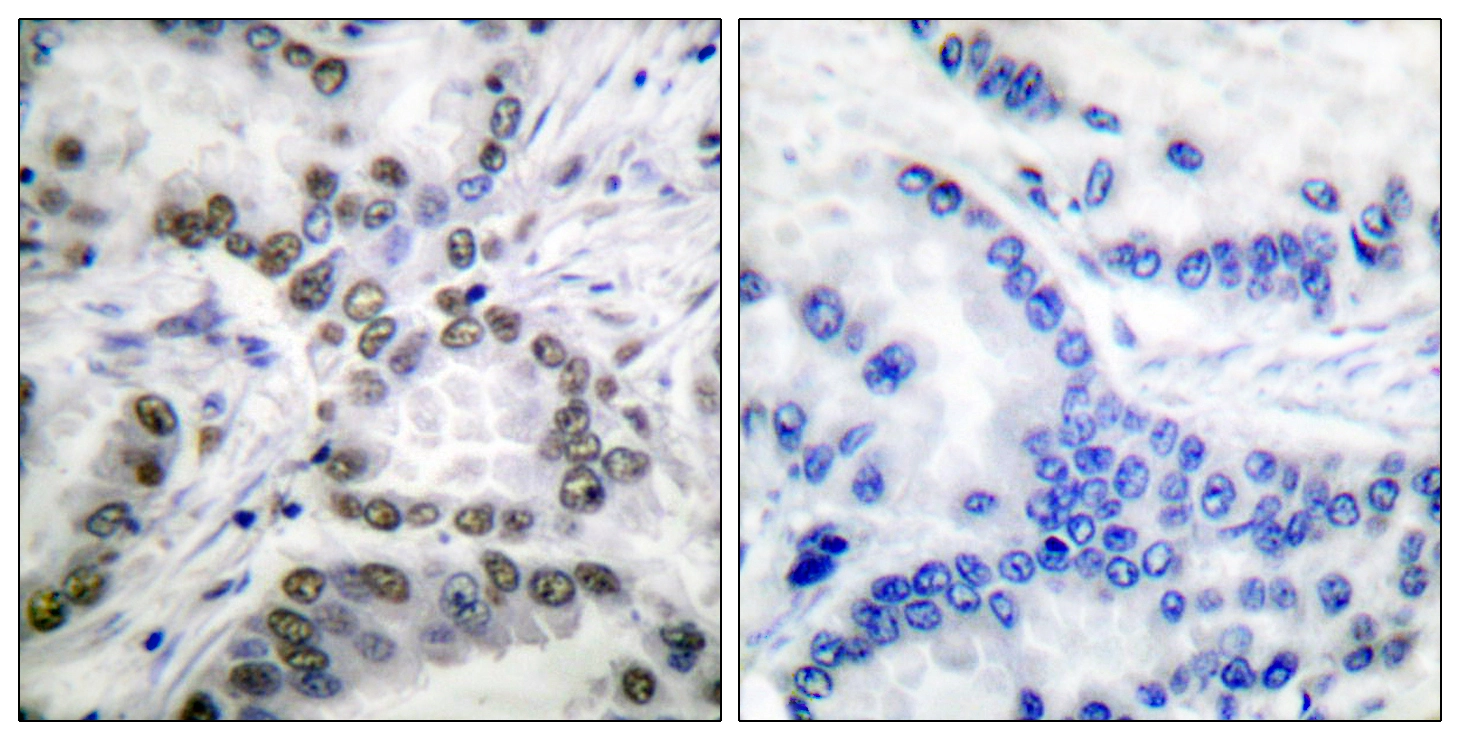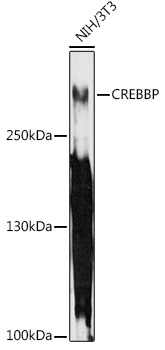CBP antibody [C3], C-term
GTX101249
ApplicationsImmunoFluorescence, ImmunoPrecipitation, Western Blot, ChIP Chromatin ImmunoPrecipitation, ImmunoCytoChemistry, ImmunoHistoChemistry, ImmunoHistoChemistry Paraffin
Product group Antibodies
TargetCREBBP
Overview
- SupplierGeneTex
- Product NameCBP antibody [C3], C-term
- Delivery Days Customer9
- Application Supplier NoteWB: 1:500-1:3000. ICC/IF: 1:100-1:1000. IHC-P: 1:100-1:1000. IP: 1:100-1:500. *Optimal dilutions/concentrations should be determined by the researcher.Not tested in other applications.
- ApplicationsImmunoFluorescence, ImmunoPrecipitation, Western Blot, ChIP Chromatin ImmunoPrecipitation, ImmunoCytoChemistry, ImmunoHistoChemistry, ImmunoHistoChemistry Paraffin
- CertificationResearch Use Only
- ClonalityPolyclonal
- Concentration0.82 mg/ml
- ConjugateUnconjugated
- Gene ID1387
- Target nameCREBBP
- Target descriptionCREB binding lysine acetyltransferase
- Target synonymsCBP, KAT3A, MKHK1, RSTS, RSTS1, CREB-binding protein, histone lysine acetyltransferase CREBBP, protein lactyltransferas CREBBP, protein-lysine acetyltransferase CREBBP
- HostRabbit
- IsotypeIgG
- Protein IDQ92793
- Protein NameCREB-binding protein
- Scientific DescriptionThis gene is ubiquitously expressed and is involved in the transcriptional coactivation of many different transcription factors. First isolated as a nuclear protein that binds to cAMP-response element binding protein (CREB), this gene is now known to play critical roles in embryonic development, growth control, and homeostasis by coupling chromatin remodeling to transcription factor recognition. The protein encoded by this gene has intrinsic histone acetyltransferase activity and also acts as a scaffold to stabilize additional protein interactions with the transcription complex. This protein acetylates both histone and non-histone proteins. This protein shares regions of very high sequence similarity with protein p300 in its bromodomain, cysteine-histidine-rich regions, and histone acetyltransferase domain. Mutations in this gene cause Rubinstein-Taybi syndrome (RTS). Chromosomal translocations involving this gene have been associated with acute myeloid leukemia. Alternative splicing results in multiple transcript variants encoding different isoforms. [provided by RefSeq]
- Storage Instruction-20°C or -80°C,2°C to 8°C
- UNSPSC12352203
References
- Pratiwi HM, Hirasawa M, Kato K, et al. Heterochronic development of pelvic fins in zebrafish: possible involvement of temporal regulation of pitx1 expression. Front Cell Dev Biol. 2023,11:1170691. doi: 10.3389/fcell.2023.1170691Read this paper
- Chen SJ, Chen LH, Yeh YM, et al. Targeting lysosomal cysteine protease cathepsin S reveals immunomodulatory therapeutic strategy for oxaliplatin-induced peripheral neuropathy. Theranostics. 2021,11(10):4672-4687. doi: 10.7150/thno.54793Read this paper
- Sengupta S, Yang C, Hegde ML, et al. Acetylation of oxidized base repair-initiating NEIL1 DNA glycosylase required for chromatin-bound repair complex formation in the human genome increases cellular resistance to oxidative stress. DNA Repair (Amst). 2018,66-67:1-10. doi: 10.1016/j.dnarep.2018.04.001Read this paper





